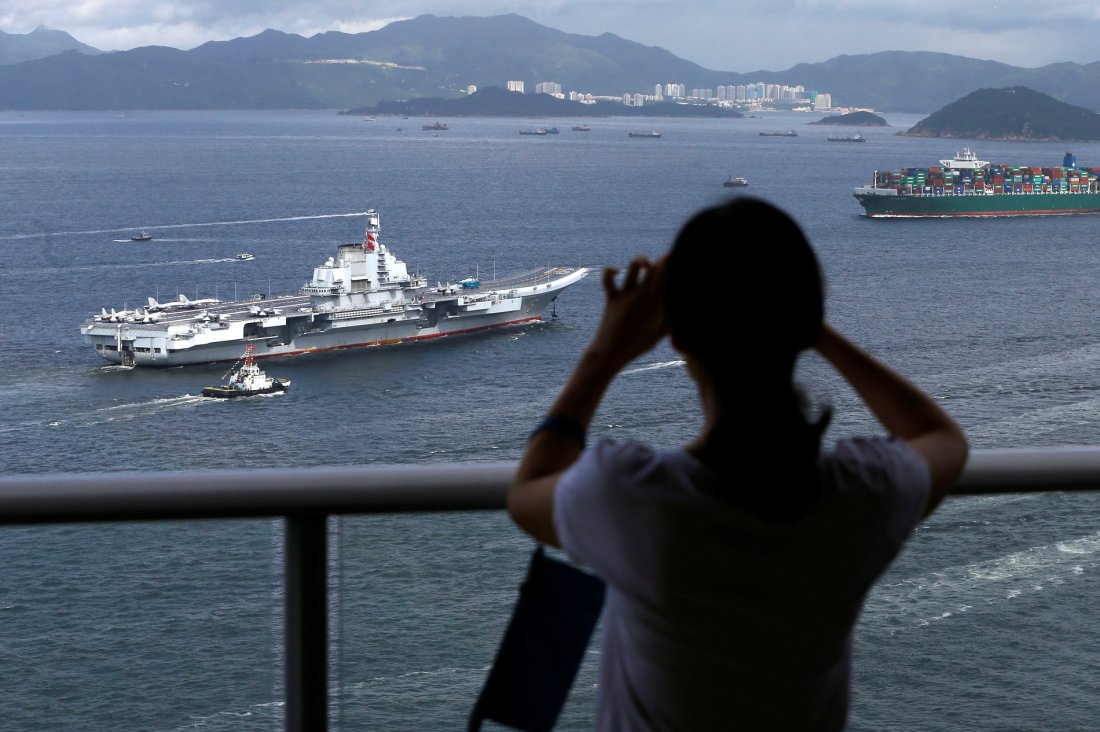by James Holmes
 In short, this is a rival who seems to have learned from Yamamoto: don’t jab a sleeping giant, and if you do, don’t steel his resolve. Let him slumber until it’s late in the contest, and you may prevail. China may have learned the true lessons of Pearl Harbor. Let’s do the same—and get ready.
In short, this is a rival who seems to have learned from Yamamoto: don’t jab a sleeping giant, and if you do, don’t steel his resolve. Let him slumber until it’s late in the contest, and you may prevail. China may have learned the true lessons of Pearl Harbor. Let’s do the same—and get ready.
In short, this is a rival who seems to have learned from Yamamoto: don’t jab a sleeping giant, and if you do, don’t steel his resolve. Let him slumber until it’s late in the contest, and you may prevail. China may have learned the true lessons of Pearl Harbor. Let’s do the same—and get ready. If we do, those who fell here seventy-five years ago will have rendered good service once again.
As we afford our hallowed forebears the remembrance they deserve, let’s also try to learn from what transpired here seventy-five years ago, and see what it tells us about America’s future as an Asia-Pacific sea power.
In particular, let’s look at Pearl Harbor through the eyes of the enemy.
Why did Japan do it? Doing nothing is a viable strategic option, and oftentimes a good one. Imperial Japan would have been far better off had it forgone the attack on Pearl Harbor and confined its operations to the Western Pacific. Had Tokyo exercised some forbearance, it may have avoided rousing the “sleeping giant” that Adm. Isoroku Yamamoto reputedly said he feared so much. And even if it did awaken the American giant, it would have avoided filling him with what Yamamoto called a “terrible resolve” to crush Japan. Think about it:
• By attacking Oahu, Japan took on a second full-blown war in the Pacific Ocean while waging a massive land war on the continent of Asia. Bear in mind that Japan had already been at war for a decade by the time it attacked Hawaii; the Imperial Japanese Army invaded Manchuria in 1931 and China proper in 1937. This was a mammoth undertaking. When the shooting stopped in 1945, some 1.8 million Japanese troops were left in China, Manchuria and Korea. That illustrates the dimensions of the ground war—a war comparable in scale to the maritime war.
• Japan picked a fight with a foe boasting vastly greater economic and industrial power, and it fired that foe’s resolve to translate economic and industrial resources—potential military power, in other words—into deployable military might on a scale that Japan had little hope of matching. My former chairman George Baer, the author of an award-winning history of the United States Navy, reminds us that our navy’s shipbuilding budget for 1940 alone exceeded a decade’s worth of Imperial Japanese Navy shipbuilding budgets. That shows what Japan was up against.
• And after the sleeping giant had started awake, the Japanese leadership failed to walk back its ambitious political and strategic aims. It tried to defend the vast territories it overran in 1941–42—and never really adapted to the new circumstances it had created by poking a slumbering America.
Picking a fight with a stronger enemy, enraging that enemy and refusing to admit the likelihood of defeat—that adds up to “self-defeating behavior” of the first order on the part of Japan’s military rulers. And the repercussions were hardly unexpected. We know they were foreseeable because perceptive Japanese military men foresaw them.
Admiral Yamamoto, to name one, caught sight of how the war would unfold. He compared fighting the United States to “fighting the whole world.” The mismatch in economic and military power would be that lopsided once American industry was in full gear, turning out war materiel in vast quantities. Yamamoto told his political superiors: “If you insist that we really do it, you may trust us for the perfect execution of a breath-taking show of naval victories for the first half-year or full year. But if the war should be prolonged into a second or third year, I am not confident at all.”
Nor should he have been. As we know from the history books, the war did spill into a second year, 1942–43, and then into a third, 1943–44, and into a fourth. By late 1943, what amounted to a second complete U.S. Navy—the shiny, new, higher-tech fleet authorized by Congress under the Two-Ocean Navy Act of 1940—was steaming into the combat theater to do battle. Events bore out Yamamoto’s prophecy once that force arrived on scene—and began overpowering Imperial Japanese Navy defenders.
So Yamamoto was right: Japan had to win quickly or not at all. But he was also wrong: by executing his plan to strike Pearl Harbor, the Imperial Japanese Navy guaranteed there would be no quick win. So, again: if the outcome was predictable, why did they do it? What should they have done?
This is a roundabout way of getting to the beginning. Let’s ask “what if?” as we look back seventy-five years to the Japanese aerial assault on this place. Now, as a Naval War College professor of strategy, I am required to mention our patron saint—our holiest of holies, the German military theorist Carl von Clausewitz—every time I give a talk like this one. So here’s a pearl of wisdom from the great Carl: no fair Monday-morning quarterbacking!
No comments:
Post a Comment